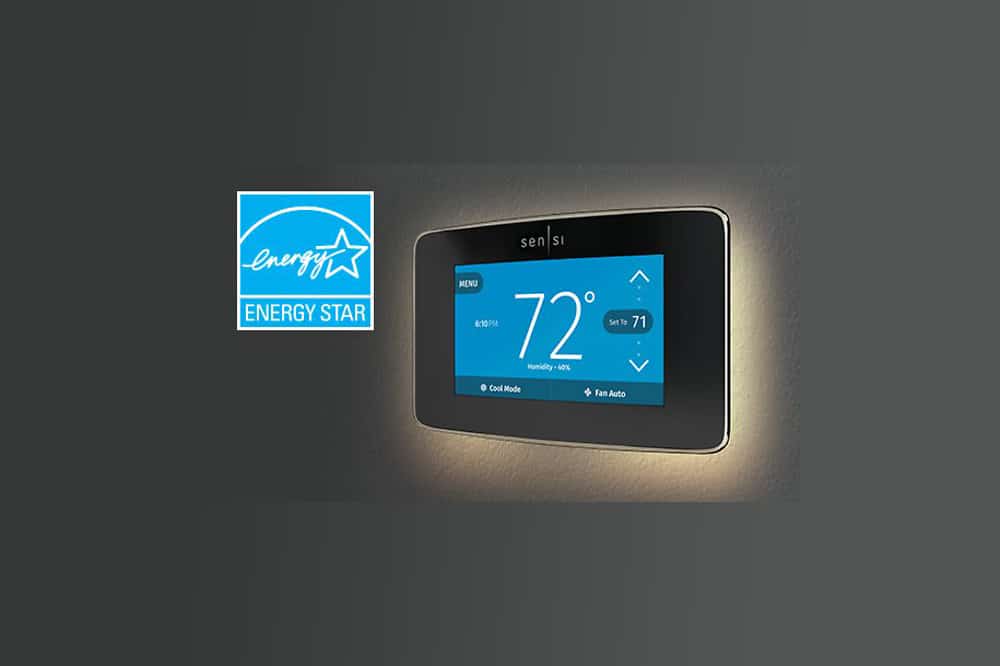If you’re planning to improve the energy efficiency of your home by upgrading your thermostat, you may already be jumping for joy in your mind thinking about all the potential savings. However, before you can just go out and buy the latest and most advanced thermostat model, you first have to determine what your home can actually handle.
Types
There are actually three different types of thermostats you can choose from:
- Most older homes, or at least homes featuring older HVAC systems, are equipped with manual units. The limited interface makes it more simple for property owners to choose whether they want the heat or air on, and what fixed temperature the home should remain at all times.
- Programmable units are likely the most popular type of thermostat for most property owners. Programmable units are still mostly compatible with a lot of older HVAC systems while also enabling greater temperature control and day-to-day energy efficiency.
- Smart units are at the very top. Though not compatible with many older HVAC systems, these thermostats allow for complete and total control over the temperature of your property any time from anywhere. They are typically Wi-Fi enabled and can be controlled with any smart phone or other personal devices.
Compatibility
To know what type of thermostat your property needs, you must first determine which type of heating and cooling system you’ve got as well as whether your home is fitted with “1 Stage” or “2 Stage.”
- Low Voltage Systems are most common, requiring only a 24v power supply. The best part is this system is compatible with most thermostats so you won’t have to look very hard when you head to the store!
- 24 Millivolt Systems are primarily for oil and/or gas powered furnaces that do not use electricity.
- Direct Line and/or High Voltage Systems refer to most electric heating systems, and typically run off an 110v to 240v power source, which means finding a compatible thermostat is a little harder since not all thermostats will work with these types of systems.
If your home is fitted with 1 Stage, it means your units will work at either full capacity or not at all. If, however, your home is fitted with 2 Stage, your systems are capable of heating and cooling at lower and higher speeds respectively.
Read The Labels
If you’re looking for a thermostat at a traditional home improvement store, most of the time they will be clearly labeled to help consumers make sure they are buying the correct products for their home. For example, if your thermostat reads:
- “Workers with 1 Stage heat or cool,” that means it’s for people who have separate heating and cooling units.
- “Works with 2 Stage or multi-stage heat or cool,” that means it’s for heating and cooling systems that are able to run at higher and lower speeds.
- “Works with Direct Line Voltage,” that means it’s compatible with 110 or 240 direct current power sources.
- “Works with 24mV,” that means it’s perfect for fireplace, wall, or floor furnaces.
- “Zoned HVAC,” that means it is ideal for properties in which heating and/or cooling are independently controlled in different areas despite utilizing the same HVAC system.
Improving Energy Efficiency
After figuring out which type of thermostat best suits your home, it’s time to make a choice. The best option for your property, if it’s compatible with your HVAC system, is likely a new programmable unit. Programmable units are fantastic because you can simply set them and forget them, allowing your home to adjust the temperature every few hours all by itself if necessary. They cut back on your homes energy output, and even save you a significant amount of money every month on your bills, but best of all they keep your family optimally comfortable.
If you’re interested in learning more about how to install and/or program a new thermostat in your home, or if you need assistance determining the type of thermostat your home needs, we encourage you to trust our knowledgeable HVAC specialists at AFM Heating & Cooling by calling 734.464.6700 for a free consultation, or simply fill out the form in the sidebar, today.


